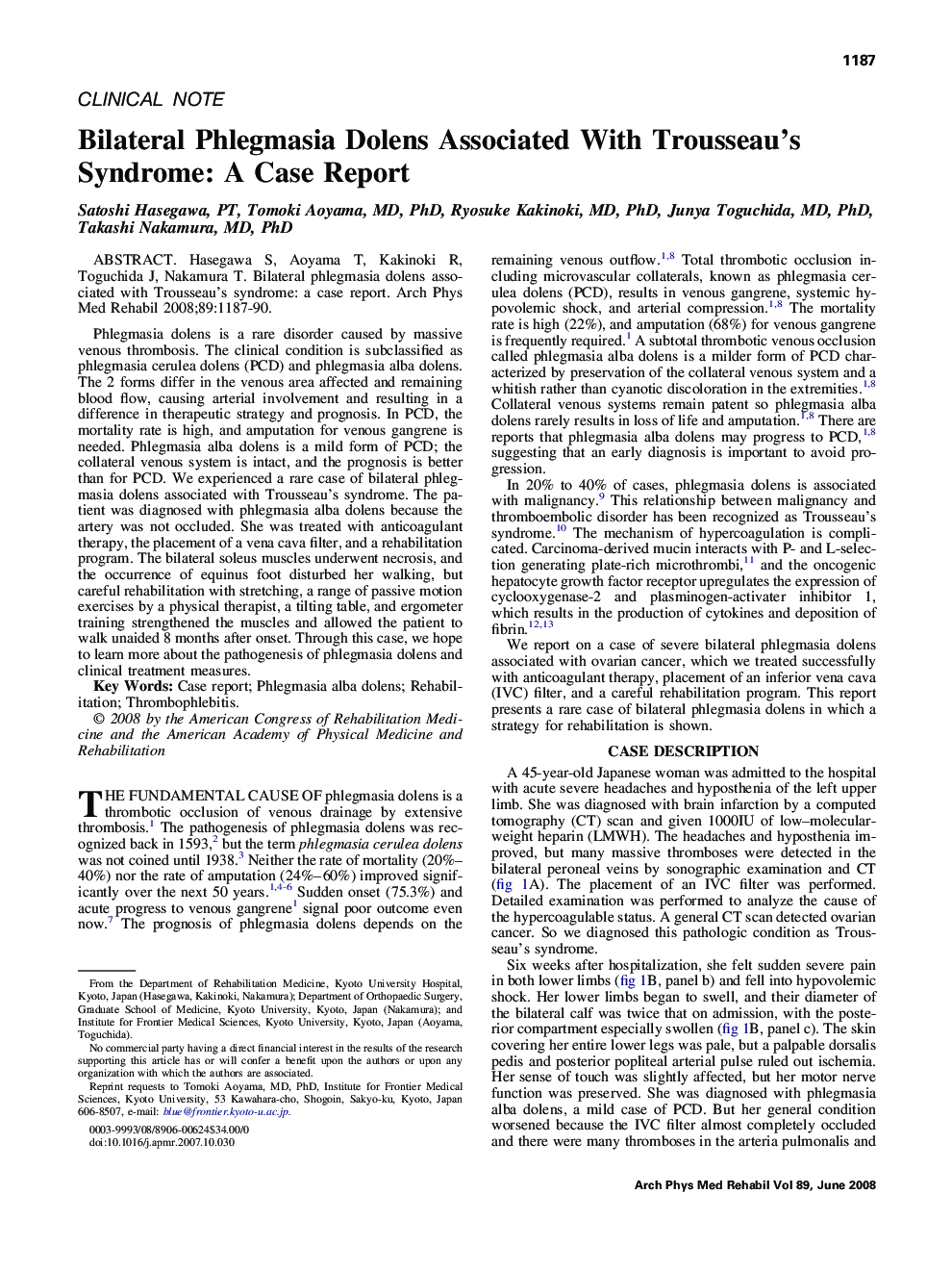| Article ID | Journal | Published Year | Pages | File Type |
|---|---|---|---|---|
| 3451795 | Archives of Physical Medicine and Rehabilitation | 2008 | 4 Pages |
Hasegawa S, Aoyama T, Kakinoki R, Toguchida J, Nakamura T. Bilateral phlegmasia dolens associated with Trousseau's syndrome: a case report.Phlegmasia dolens is a rare disorder caused by massive venous thrombosis. The clinical condition is subclassified as phlegmasia cerulea dolens (PCD) and phlegmasia alba dolens. The 2 forms differ in the venous area affected and remaining blood flow, causing arterial involvement and resulting in a difference in therapeutic strategy and prognosis. In PCD, the mortality rate is high, and amputation for venous gangrene is needed. Phlegmasia alba dolens is a mild form of PCD; the collateral venous system is intact, and the prognosis is better than for PCD. We experienced a rare case of bilateral phlegmasia dolens associated with Trousseau's syndrome. The patient was diagnosed with phlegmasia alba dolens because the artery was not occluded. She was treated with anticoagulant therapy, the placement of a vena cava filter, and a rehabilitation program. The bilateral soleus muscles underwent necrosis, and the occurrence of equinus foot disturbed her walking, but careful rehabilitation with stretching, a range of passive motion exercises by a physical therapist, a tilting table, and ergometer training strengthened the muscles and allowed the patient to walk unaided 8 months after onset. Through this case, we hope to learn more about the pathogenesis of phlegmasia dolens and clinical treatment measures.
